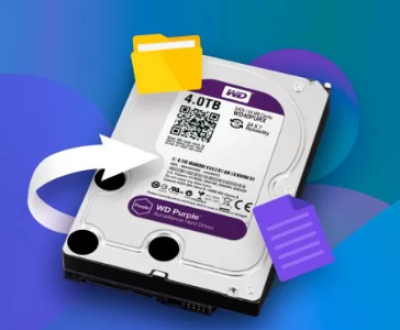The best SD card for a camera can vary depending on several factors, such as the camera’s specifications, the type of photography or videography you’re involved in, and your specific needs for storage, speed, and reliability. For a comprehensive guide, it’s important to understand the different types of SD cards, their features, and how to choose the one that best suits your camera and shooting style.
1. Types of SD Cards
SD cards come in three primary formats: SD, SDHC (Secure Digital High Capacity), and SDXC (Secure Digital Extended Capacity). The type of SD card you need largely depends on your camera’s capabilities and what kind of files you’re planning to store.

SD Cards (Standard Capacity): Typically, these cards range from 128MB to 2GB. They are becoming outdated and are mostly suitable for older devices that don’t support larger capacities.
SDHC Cards (High Capacity): SDHC cards range from 4GB to 32GB in size. These are commonly used in many digital cameras, especially for everyday shooting and moderate video recording.
SDXC Cards (Extended Capacity): SDXC cards offer a storage capacity from 32GB up to 2TB. They are most appropriate for cameras that support high-resolution images and 4K/8K video recording, and they are widely used in modern mirrorless, DSLR, and video cameras.
2. Speed Classes: Why They Matter
Speed is one of the most critical factors to consider when choosing an SD card. If your camera captures high-resolution images or records high-definition video, you need an SD card with fast write and read speeds to handle the large file sizes.
Class 2: Minimum write speed of 2MB/s. These cards are quite outdated and are no longer typically used in modern cameras.
Class 4: Minimum write speed of 4MB/s. Suitable for standard-resolution photography but not ideal for high-definition video recording.
Class 6: Minimum write speed of 6MB/s. These are adequate for HD video recording and still photography but may not be fast enough for high-frame-rate video.
Class 10: Minimum write speed of 10MB/s. This is the standard speed for many modern SD cards and is good for HD video and fast continuous shooting.
UHS (Ultra High Speed): UHS-I, UHS-II, and UHS-III cards offer faster speeds than standard Class 10 cards. UHS-I cards have a maximum read speed of 104MB/s, UHS-II cards can reach up to 312MB/s, and UHS-III cards go beyond that.
UHS-I: Suitable for most DSLR and mirrorless cameras, particularly for 1080p video and moderate frame rates.
UHS-II: Best for 4K or 6K video recording, continuous high-speed shooting, or when using professional-grade cameras.
UHS-III: Excellent for 8K video recording, high-speed burst shots, and pro-level videography.
3. V (Video Speed) Rating
The Video Speed Class rating indicates the card’s ability to handle sustained video recording. For professional video shooters, especially those shooting in 4K or 8K, a higher V-class rating is essential.
V6: Suitable for HD video recording.
V10: Ideal for full HD (1080p) recording.
V30: Recommended for 4K video recording.
V60 and V90: These are for high-end video recording such as 6K, 8K, and slow-motion footage.
4. Capacity
Capacity is another important factor to consider when selecting an SD card. The more storage capacity, the more photos or videos you can store before needing to change or offload the card. The capacity you need largely depends on the camera’s resolution, the type of work you’re doing, and the file sizes you’re dealing with.
32GB: Good for casual photography and video recording.
64GB: Ideal for medium-level video recording, including HD and 4K.
128GB-512GB: Recommended for professional videographers or photographers who shoot a lot of 4K or 8K video, or high-res still images in RAW format.
1TB+: Best suited for advanced users recording large video files regularly, such as those shooting in 8K or using high-frame-rate recording.
5. Durability and Reliability
For many photographers and videographers, the durability and reliability of an SD card are just as important as speed and capacity. Professional-level cards are often built to handle harsh conditions such as extreme temperatures, water exposure, and physical impacts. The durability features of SD cards include:
Waterproof: Essential for use in environments with rain or water exposure.
Shockproof: Designed to withstand impacts and drops.
Temperature-Proof: Can function in a wide range of temperatures, making them suitable for outdoor or extreme environments.
X-ray Proof: Ensures the card remains operational even after passing through airport security scanners.
Brands that offer such durability features include SanDisk Extreme, Lexar Professional, and Samsung PRO Plus.
6. Compatibility with Camera Models
Ensure the SD card you choose is compatible with your camera. Some cameras, particularly older models, may only support SDHC cards, while newer cameras might require SDXC cards for full functionality. Additionally, check if your camera supports UHS-I or UHS-II cards, as some older models may not be able to fully utilize the speeds offered by UHS-II cards.
7. Top SD Cards for Cameras
SanDisk Extreme Pro SDXC UHS-I
SanDisk is one of the most trusted brands in the industry, known for making reliable and high-performance memory cards. The SanDisk Extreme Pro SDXC UHS-I is designed for high-end cameras and camcorders, offering a maximum read speed of up to 170MB/s and a write speed of 90MB/s. This card is ideal for 4K video recording, rapid burst mode shooting, and professional photography.
Key Features:
Capacity: Available in 64GB, 128GB, 256GB, and 512GB variants.
Speed Class: UHS Speed Class 3 (U3), Video Speed Class 30 (V30), and UHS-I interface.
Durability: Waterproof, shockproof, temperature-proof, and X-ray proof.
Lexar Professional 1000x SDXC UHS-II
The Lexar Professional 1000x SDXC UHS-II is one of the best SD cards for high-resolution photographers and videographers. It provides a read speed of 150MB/s and a write speed of up to 90MB/s, making it ideal for 4K video and continuous shooting with DSLR or mirrorless cameras.
Key Features:
Capacity: Available in 64GB, 128GB, 256GB, and 512GB variants.
Speed Class: UHS-II, U3. V60.
Durability: Shockproof and temperature-proof.
Samsung EVO Plus SDXC UHS-I
The Samsung EVO Plus SDXC UHS-I is a fantastic budget option for photographers who need a reliable card without breaking the bank. It’s fast enough for shooting 4K video and offers excellent read/write speeds, making it a great choice for both photographers and videographers.
Key Features:
Capacity: Available in 64GB, 128GB, 256GB, and 512GB variants.
Speed Class: UHS-I U3. V30.
Durability: Waterproof, shockproof, and temperature-proof.
Sony SF-G Tough Series UHS-II SDXC
The Sony SF-G Tough Series UHS-II SDXC is a high-performance, durable SD card designed for professional photographers and videographers. With an impressive read speed of 300MB/s and a write speed of 299MB/s, this card is perfect for high-end 4K/8K video recording and fast burst shooting.
Key Features:
Capacity: Available in 32GB, 64GB, 128GB, and 256GB variants.
Speed Class: UHS-II, U3. V90.
Durability: Shockproof, waterproof, and bend-proof.
About us and this blog
Panda Assistant is built on the latest data recovery algorithms, ensuring that no file is too damaged, too lost, or too corrupted to be recovered.
Request a free quote
We believe that data recovery shouldn’t be a daunting task. That’s why we’ve designed Panda Assistant to be as easy to use as it is powerful. With a few clicks, you can initiate a scan, preview recoverable files, and restore your data all within a matter of minutes.
Subscribe to our newsletter!
More from our blog
See all postsRecent Posts
- Recover deleted files windows 2025-07-02
- How to recover previous excel file 2025-07-02
- How to recover files that are permanently deleted 2025-07-02

 Try lt Free
Try lt Free Recovery success rate of up to
Recovery success rate of up to









